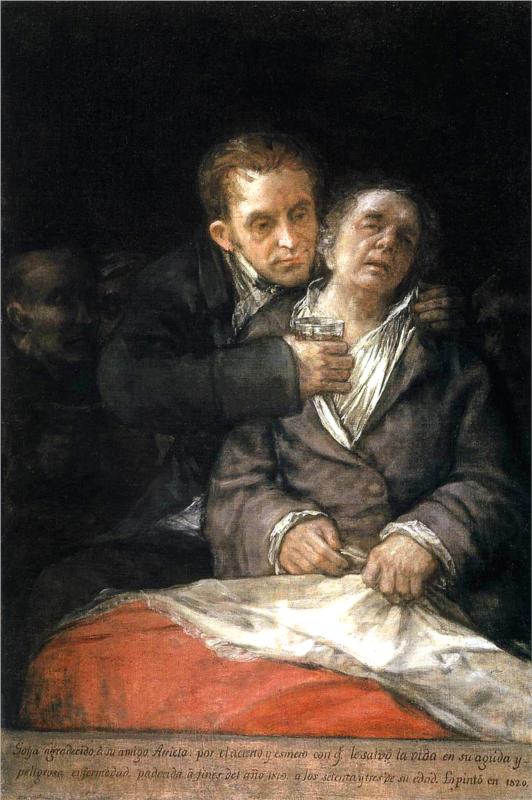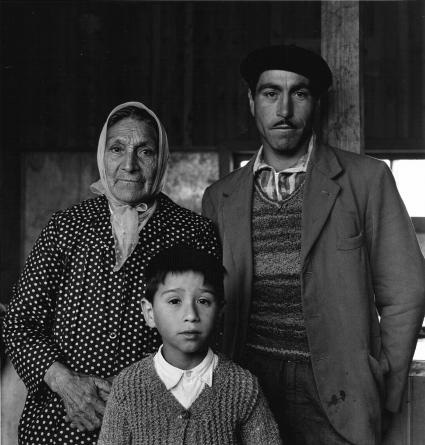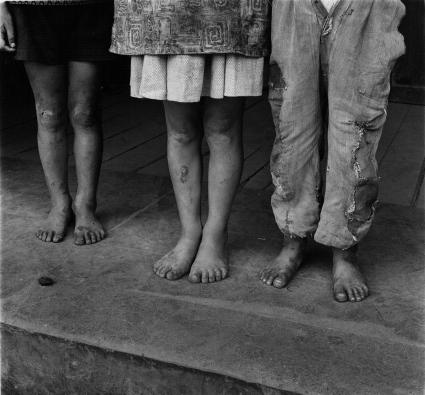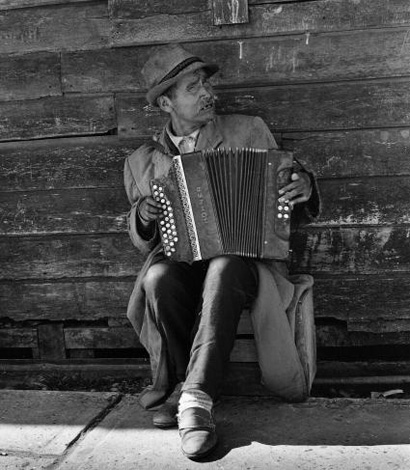
- The cry of the poor is not always just, but if you don’t listen to it, you will never know what justice is. [Howard Zinn, A People’s History of the United States (1980), Chapter 1, “Columbus, the Indians, and Human Progress”.]
In Buddhism, the supreme aim of human life, as expressed through the Four Noble Truths, is the elimination of suffering. The health sciences are dedicated to it directly and many professions are dedicated to it either directly or indirectly. Anyone who engages in charity work, or good works of any kind, is engaged in the elimination of suffering. In fact, a musician is trying to eliminate suffering through her art. When we begin to see how every good work or act of service is aimed at the elimination of suffering, we have begun to think like a Buddhist master.
Real
True Narratives
- Ben Shephard, The Long Road Home: The Aftermath of the Second World War (Alfred A. Knopf, 2011): displaced persons after World War II.
- Siddhartha Mukherjee, The Emperor of All Maladies: A Biography of Cancer (Scribner, 2010).
- Adam Hochschild, To End All Wars: A Story of Loyalty and Rebellion, 1914-1918 (Houghton Mifflin Harcourt, 2011): presenting World War I as a slaughter of the working class.
THE POOR:
- Tracy Kidder, Mountains Beyond Mountains: The Quest of Dr. Paul Farmer, The Man Who Would Cure the World (Random House, 2009).
Milton Rogovin championed the poor through photography.
- Dave Isay, David Miller and Harvey Wang, Milton Rogovin: The Forgotten Ones (Quantuck Lane Press, 2003).
- Judith Keller, Milton Rogovin: The Mining Photographs (J. Paul Getty Museum, 2005).
- Melanie Anne Herzog, Milton Rogovin: The Making of a Social Documentary Photographer (University of Washington Press, 2006).
- Joann Wypijewski, Tryptichs: Buffalo’s Lower West Side Revisited (W.W. Norton & Co., 1994).
- Milton Rogovin and Eric Gansworth, From the Western Door to the Lower West Side (White Wine Press, 2009).
- Chris Hedges and Joe Sacco, Days of Destruction, Days of Revolt (Nation Books, 2012).
Milton Rogovin, a photographer who "took photographs from within a Yemeni community, the East Side of Manhattan and just about anywhere he could find poor people.
The sick:
- Rachel Pearson, No Apparent Distress: A Doctor’s Coming-of-Age on the Front Lines of American Medicine (W.W. Norton & Company, 2017). “A doctor describes her experiences trying to help the uninsured poor.”
- Thomas Fisher, The Emergency: A Year of Healing and Heartbreak in a Chicago ER (One World, 2022), “is about being an emergency room doctor on Chicago’s South Side; it’s a busy book about a busy man.”
The displaced:
- Lars Eighner, Travels with Lizbeth: Three Years on the Road and on the Streets (St. Martin’s Press, 1993): “ . . . a modern autobiography of a supertramp. For Lars Eighner, homelessness was until very recently a full-time job, as it was for Davies, and this book takes us into the profound depths of that other country that lies all around us on the streets.”
Technical and Analytical Readings
Photographs
Documentary and Educational Films
- Harlan County, USA, about coal miners struggling to unionize
- I Am Because We Are, a documentary about Madonna’s work to help impoverished children in Malawi
Imaginary
Fictional Narratives
"Drink!” repeated Quasimodo panting, and for the third time.
At that moment he beheld the crowd give way. A young girl, fantastically dressed, emerged from the throng. She was accompanied by a little white goat with gilded horns, and carried a tambourine in her hand.
Quasimodo’s eyes sparkled. It was the gypsy whom he had attempted to carry off on the preceding night, a misdeed for which he was dimly conscious that he was being punished at that very moment; which was not in the least the case, since he was being chastised only for the misfortune of being deaf, and of having been judged a deaf man. He doubted not that she had come to wreak her vengeance also, and to deal her blow like the rest.
He beheld her, in fact, mount the ladder rapidly. Wrath and spite suffocate him. He would have liked to make the pillory crumble into ruins, and if the lightning of his eye could have dealt death, the gypsy would have been reduced to powder before she reached the platform.
She approached, without uttering a syllable, the victim who writhed in a vain effort to escape her, and detaching a gourd from her girdle, she raised it gently to the parched lips of the miserable man.
Then, from that eye which had been, up to that moment, so dry and burning, a big tear was seen to fall, and roll slowly down that deformed visage so long contracted with despair. It was the first, in all probability, that the unfortunate man had ever shed.
Meanwhile, he had forgotten to drink. The gypsy made her little pout, from impatience, and pressed the spout to the tusked month of Quasimodo, with a smile.
He drank with deep draughts. His thirst was burning.
When he had finished, the wretch protruded his black lips, no doubt, with the object of kissing the beautiful hand which had just succoured him. But the young girl, who was, perhaps, somewhat distrustful, and who remembered the violent attempt of the night, withdrew her hand with the frightened gesture of a child who is afraid of being bitten by a beast.
Then the poor deaf man fixed on her a look full of reproach and inexpressible sadness.
It would have been a touching spectacle anywhere,—this beautiful, fresh, pure, and charming girl, who was at the same time so weak, thus hastening to the relief of so much misery, deformity, and malevolence. On the pillory, the spectacle was sublime. [Victor Hugo, Notre-Dame de Paris, or, The Hunchback of Notre Dame (1831), Volume I, Book Sixth, Chapter IV, “A Tear for a Drop of Water”.]
Novels:
- Pearl S. Buck, The Good Earth (1931).
- Marysé Conde, Waiting for the Waters to Rise (2018): “Condé puts forth the secrets and histories of a fascinating cast, producing a timeless exploration of the wounds that emerge—and linger—when people lose those who mean the most to them, be it their family, friends, or country.”
Poetry
I'm Ramón González Barbagelata from anywhere,
from Cucuy, from Paraná, from Rio Turbio, from Oruro,
from Maracaibo, from Parral, from Ovalle, from Loconmilla,
I'm the poor devil from the poor Third World,
I'm the third-class passenger installed, good God!
in the lavish whiteness of snow-covered mountains,
concealed among orchids of subtle idiosyncrasy.
I've arrived at this famous year 20000, and what do I get?
With what do I scratch myself? What do I have to do with
the three glorious zeros that flaunt themselves
over my very own zero, my own non-existence?
Pity that brave heart awaiting its call
or the man enfolded by warmer love,
nothing's left today except my flimsy skeleton,
my eyes unhinged, confronting the era's beginning.
The era's beginning: are these ruined shacks,
these poor schools, these people still in rags and tatters,
this cloddish insecurity of my poor families,
is all this the day? the century's beginning, the golden door?
Well, enough said, I, at least, discreet,
as in office, patched and pensive,
I proclaim the redundancy of the inaugural:
I've arrived here with all my baggage,
bad luck and worse jobs,
misery always waiting with open arms,
the mobilization of people piled up on top of each other,
and the manifold geography of hunger.
[Pablo Neruda, “The Men”]
Music: Composers, artists, and major works
Compositions:
- John Adams, The Wound Dresser (1988) (approx. 19’) (text, from Walt Whitman) “is the most intimate, most graphic, and most profoundly affecting evocation of the act of nursing the sick and dying that I know of. It is also astonishingly free of any kind of hyperbole or amplified emotion, yet the detail of the imagery is of a precision that could only be attained by one who had been there.” [Adams]
- Richard Blackford, Vision of a Garden (2021) (approx. 16’) is a choral work “about one man’s direct and intense experience of (the COVID pandemic), an out of body experience he had in the ICU, and the care he received from the nursing staff.”
- John Corigliano, Symphony No. 1 (1988) (approx. 40’) is about the AIDS epidemic. Corigliano has explained: “I was extremely moved when I first saw ‘The Quilt,’ an ambitious interweaving of several thousand fabric panels, each memorializing a person who had died of AIDS, and, most importantly, each designed and constructed by his or her loved ones. This made me want to memorialize in music those I had lost, and reflect on those I was losing.”
- Mieczysław Weinberg, Chamber Symphony No. 4 for clarinet, triangle and string orchestra, Op. 153 (1992) (approx. 29-33’): “An aching folksiness pervades the slow movement and a triangle offers two single shafts of light at the beginning and very end (a tiny touch of genius) of a final movement which seems to have been composed in the playing of it.”
- Weinberg, String Quartet No. 15, Op. 124 (1979) (approx. 25-27’)
- Boris Tchaikovsky, Cello Concerto in E Major (1964) (approx. 29’) “is in four movements and employs unusual instrumentation: three flutes, three trumpets, three trombones, percussion, harp and strings.” The tension that pervades the work and the unusual cast of characters combine to evoke the core theme.
- Cristóbal Halffter, Planta por las victimas de la violencia (1971) (approx. 21’)
- Halffter, Cello Concerto No, 2, “No queda mas que el silencio” (“There is nothing left but silence”) (1999) (approx. 38’)
- Raga Kamod is a Hindustani classical raag for early evening, visually portrayed as a young woman with a rosary in her hand. Legend held that this raga could cure the sick. Performances are by Bade Ghulam Ali Khan, Vilayat Khan and Ulhas Kashalkar.
- Krzysztof Penderecki, Cello Concerto No. 2 (1999) (approx. 34-37’) departs from many conventions for a concerto, and uses the cello’s naturally mournful voice to set the tone.
Albums:
- Chuck Mangione, “Children of Sanchez” (1977) (84’) probably is the greatest film score for a poorly received film. The film and the music are about children in an impoverished and oppressed village.
- Julius Hemphill, “The Boyé Multi-National Crusade for Harmony” (2021) (479’): “The Boyé Multi-National Crusade For Harmony was the name Hemphill gave to a variety of his touring bands.”
- Remmy Ongala & Orchestre Super Matimila, “Songs for the Poor Man” (1989) (69’) offers “a window into a bleak period of Tanzanian history where The Doctor’s cutting lyrics were a glimmer of hope in trying to remedy the nation’s afflictions”.
- Musica Intima, “Forgotten Peoples” (2006) (60’), consists of some of Veljo Tormis’ vocal music.
- Various artists “Sahrauis: The Music of the Western Sahara” (1999) (167’): “In 1998, four European producers set out on an arduous journey and transporting recording equipment to the Sahara Desert to record traditional music of yesterday and today as interpreted by the Saharawis (also known as Sahrawis, Saharauis and Sahrauis) people of the exiled nation, Democratic Arab Republic of Sahara.” This compilation is a result of that endeavor.
- William Parker, “In Order to Survive” (1992) (70’): “Bassist William Parker's survival techniques demand liberty and solos for all. The members of this sextet feed off one another's energy, filling their collective plate with counterpoint, and expressing music in colors and feelings spontaneously derived from thematic motifs.”
- Mdou Moctar, “Afrique Victime” (2021) (41’) is “an innovative alchemy of Tuareg folk, blues and rock, electric guitar pyrotechnics, field recordings and electronics with poetic call-to-arms lyrics about the plight of (Moctar’s) homeland of Niger.”
Music: songs and other short pieces
- Paul Simon, “Homeless” (lyrics)
- Chorus of Hebrew slaves (lyrics), from Verdi’s Nabucco
Visual Arts
- Diego Rivera, Night of the Poor (1928)
- Frédéric Bazille, The Improvised Field Hospital (1865)
- Gustave Courbet, The Wounded Man (1844-45)
- Gabriel Metsu, The Sick Child (ca. 1660)
- Adriaen Brouwer, The Operation (c. 1631)
- Angelo Caroselli, The Plague at Ashdod (after Nicolas Poussin) (1631)
On suffering at the hands of others:
- Joseph Mallord William Turner, Slave Ship (1840)
- Francesco de Goya, The Third of May, 1808 (1814-15)
Film and Stage
- The Lower Depths: Two great filmmakers, AkiraKurosawa (Donzoko) and Jean Renoir (Les Bas-fonds), reinterpreted a 1902 play by Maxim Gorky.
- The Good Earth, abouta poor Chinese family
- Bonnie and Clyde, a filmabout “rebels who empathized with the poor working folks of the 1930s” – I emphasize that I do not offer their lives as examples of moral virtue but the genesis of their anti-hero status is an important reminder about the ethical perils inherent in the continual struggle against injustice in an unjust world
- The Gleaners and I, a documentaryabout people who scavenge for crops, this film is an “extended essay on poverty”
- Bound for Glory, a dramatizationof Woody Guthrie’s life
- Armadillo, on “the means by which war has been brought home to noncombatants”
- The Little Fugitive, about the fears a small boy tricked into thinking he has killed his brother, and his methods of escape
- Look Back in Anger, a pessimistic lookat the struggling working class
- Lamerica: taking advantageof the poor for political gain
- Viridiana: a young nun reluctantly visits her uncle, who has an unhealthy attraction to her, and ends up trying to change the lives of destitute people through charity


